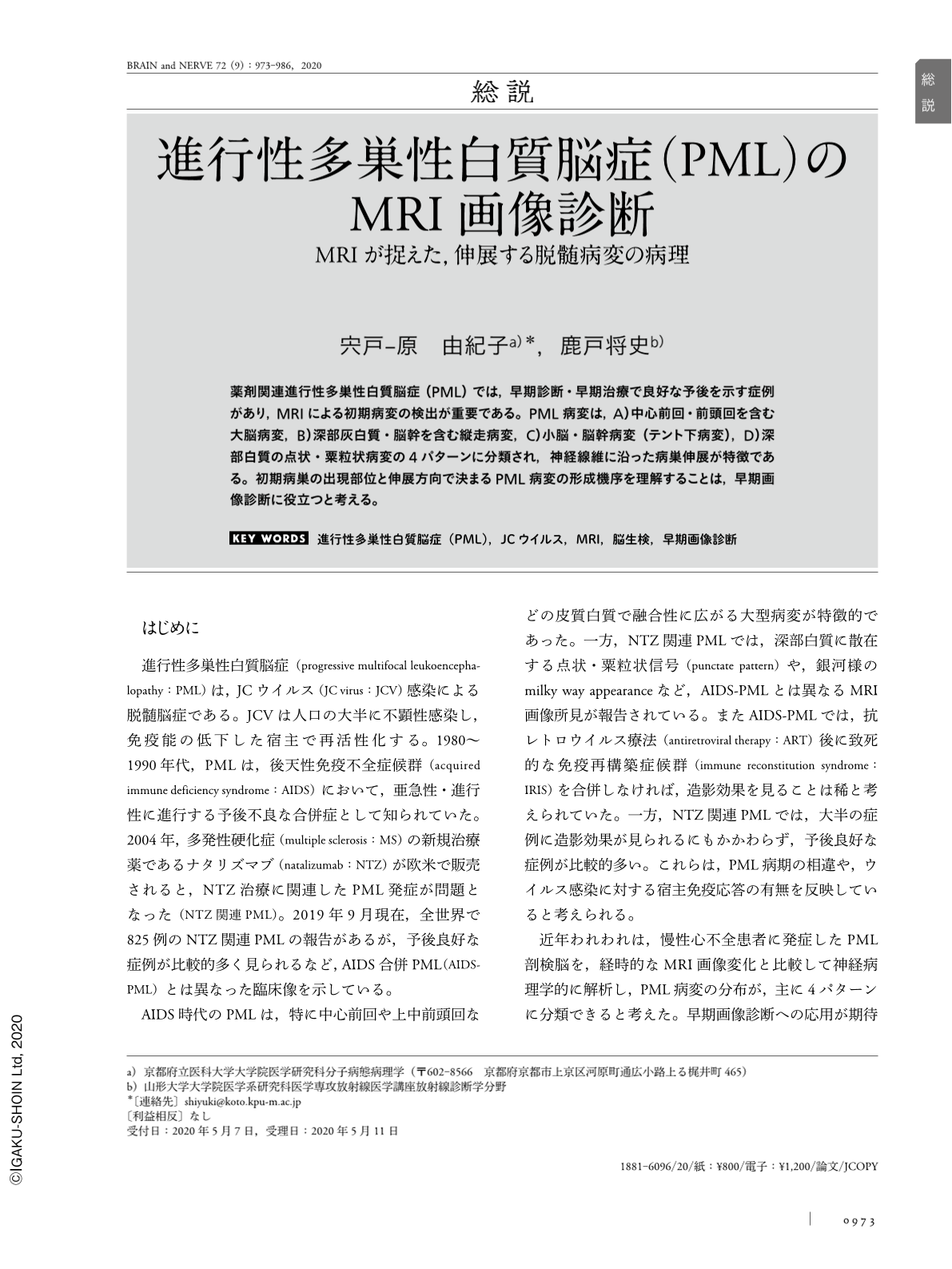Japanese
English
- 有料閲覧
- Abstract 文献概要
- 1ページ目 Look Inside
- 参考文献 Reference
薬剤関連進行性多巣性白質脳症(PML)では,早期診断・早期治療で良好な予後を示す症例があり,MRIによる初期病変の検出が重要である。PML病変は,A)中心前回・前頭回を含む大脳病変,B)深部灰白質・脳幹を含む縦走病変,C)小脳・脳幹病変(テント下病変),D)深部白質の点状・粟粒状病変の4パターンに分類され,神経線維に沿った病巣伸展が特徴である。初期病巣の出現部位と伸展方向で決まるPML病変の形成機序を理解することは,早期画像診断に役立つと考える。
Abstract
Although progressive multifocal leukoencephalopathy (PML) is known as a fatal disease, some recent cases have shown favorable prognosis with early diagnosis. Therefore, detection of early PML lesions using magnetic resonance imaging (MRI) is important. PML lesions are divided into 4 groups based on distinct developing patterns: A)cerebral lesion, B)central lesion including deep gray matter, C)infratentorial lesion of the brain stem and cerebellum, and D)punctate lesions in the deep white matter. These lesions develop in 3 steps: 1)initiation of a small demyelinating lesion, 2)extension/expansion, and 3)fusion. It is likely that the viruses first reach the brain via the bloodstream and form small demyelinating foci (initiation). Second, the demyelinating foci spread along nerve fibers or expand at the sites (extension/expansion). Finally, the foci fuse with one another to form larger demyelinating lesions (fusion). Understanding the spreading patterns of the virus could help early MRI diagnosis of PML, which is important for favorable prognosis.
(Received May 7, 2020; Accepted May 11, 2020; Published September 1, 2020)

Copyright © 2020, Igaku-Shoin Ltd. All rights reserved.


